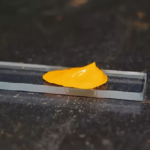A patent for the manufacture of Uralite was acquired by one of the English firms, and this material began to be successfully used in England and India.
In 1908. In Bryansk, the first in Russia was built a plant for the production of asbestos-cement pressed roofing tiles with dimensions of 30×30 and 40×40 cm, 3-4 mm thick. These tiles were called “Eternite” (eternal material) or “terror” (artificial slate). The plant was equipped with one leaf -forming machine with two mesh cylinders with a diameter of 720 mm. Its performance was only 3,500 tiles per shift.
Despite the obvious advantages and efficiency of new roofing material, they met it with apprehension and recommended it at first only for rural construction.
In 1911. In St. Petersburg, at the first All-Russian Congress of Rural Fire Building, it was decided to “recognize the artificial cement slate by the best type of roofing material, by lightness, strength and fire resistance quite suitable in rural construction, but if it is necessary to lower its cost”.
In order to overcome distrust of new material, on a number of private houses in Bryansk and on all newly built station buildings of the Kazan railway, slate roof was laid for free.
The new material has justified itself. The successful use of roofing asbestos -cement tiles has led to the further development of their production. Until 1914. Three more slate plants in the GG were built. Rostov-on-Don, Baku and Lublino.
In 1913. 9 million were produced in Russia. Sixtra conditional tiles or translated into a roofing area of 460 thousand. M2.
Asbestos -cement industry in our country was essentially created after the victory of the Soviet regime, during the period of industrialization of the national economy, during the first pre -war five years.





